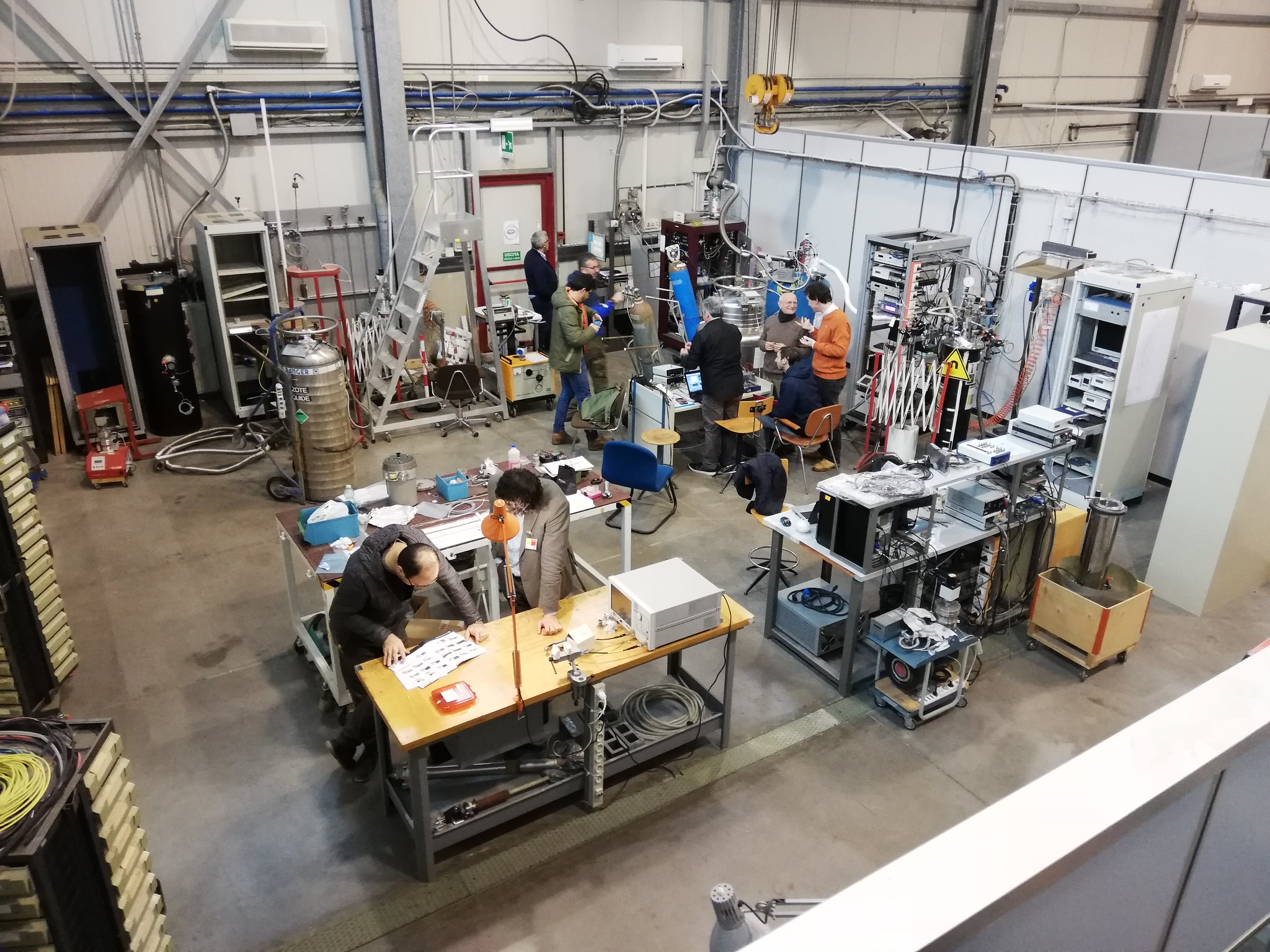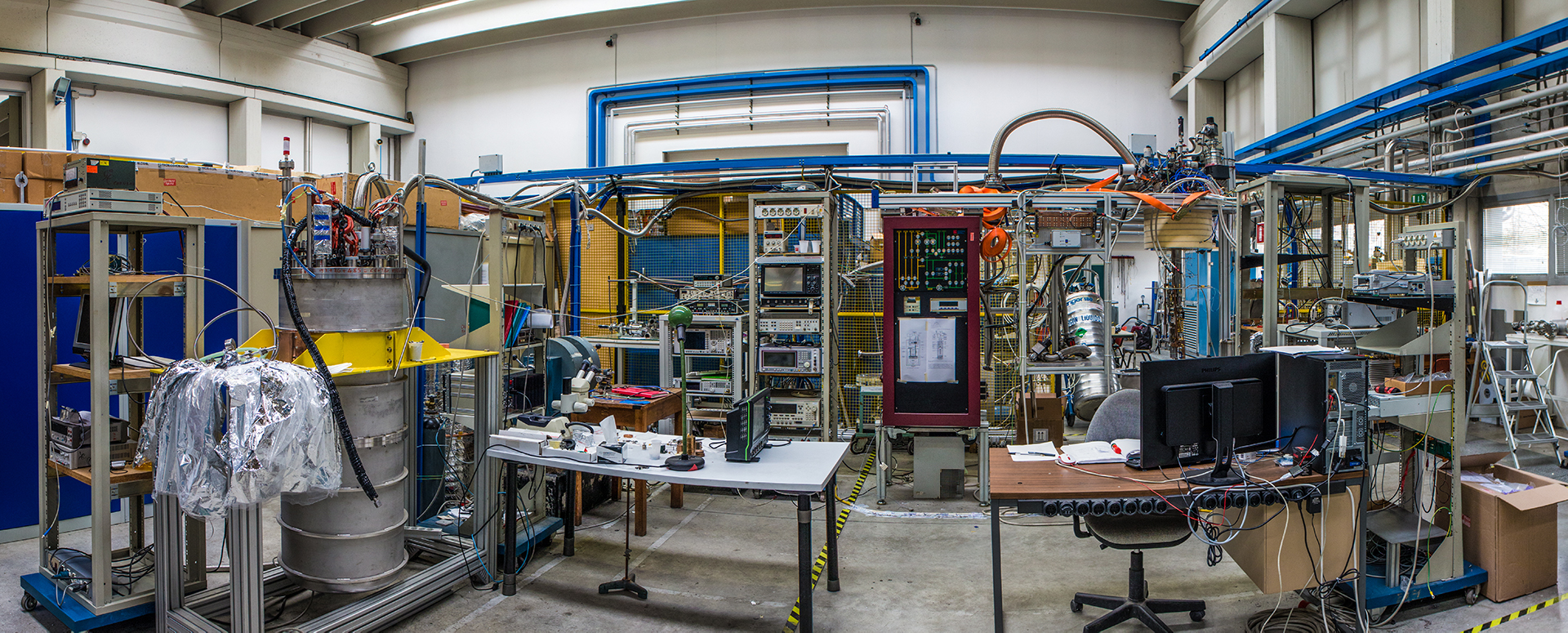Welcome to the QUAX project webpage
About QUAX
The QUAX experiment
QUAX a-γ
The QUAX-agamma experiment is currently constructing two haloscopes to search for dark matter axions with the standard Sikivie type technique based on the axion photon coupling.
The operation of two complementary apparatuses, one located in the Laboratori Nazionali di Legnaro (LNL) and the other in the Laboratori Nazionali di Frascati (LNF), is foreseen. The two haloscopes will be working on two frequency bands centred around 10 GHz and 9 GHz respectively, implementing two different types of microwave cavities and quantum limited detectors. Cavities are immersed in a strong solenoidal field to convert dark matter axions into photons then detected with travelling wave parametric amplifiers. The LNL haloscope will be based on a nested cylinders sapphire cavity with quality factor of order one million and an 8 T magnet, to be upgraded to 14 T. The LNF haloscope will comprise a multi cavity geometry with hybrid superconducting – normal conducting geometry and a 9 T magnet. Both cavity systems are designed to allow for a frequency tuning of about 1 GHz and sensitivity to the standard QCD axion is expected.
QUAX a-e
The QUAX-ae ferrimagnetic haloscope experiment, located at the Laboratori Nazionali di Legnaro, is developing a detector for dark matter axion exploiting the coupling to electrons.
Due to the motion of the Earth across the galactic halo, the effect of an axion galactic halo is to act on the electron spin as a tiny effective magnetic field of order 10-22 T. The haloscope is realised by coupling a microwave resonant cavity to a magnetic material immersed in a static magnetic field. By tuning the material ferromagnetic resonance it is possible to search for axions with masses equal to the Larmor frequency: in such a case, radiofrequency power will be emitted from the system and collected with state of the art amplifiers.
The latest version of the detector comprises ten Yttrium Iron Garnet 2.1 mm-diameter spheres strongly coupled to a 10.4 GHz copper cavity, operating in a 0.3 T highly uniform magnetic field.
Detection is performed with a quantum limited Josephson Parametric Amplifier, providing a final sensitivity of about 5·10-19 T for the current setup, while development of a single photon counter is foreseen in the next future.


